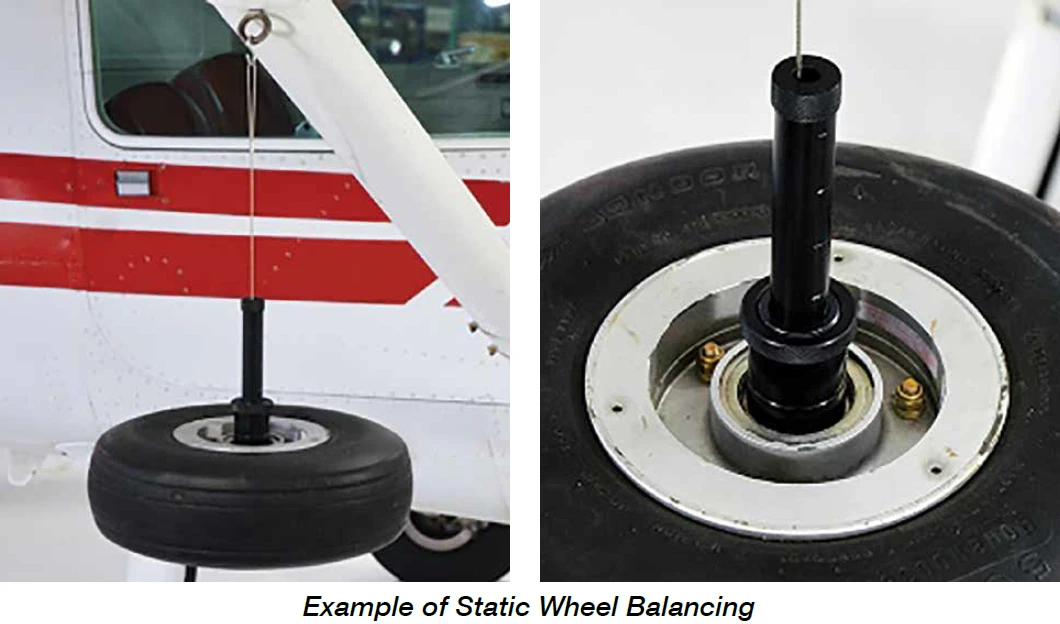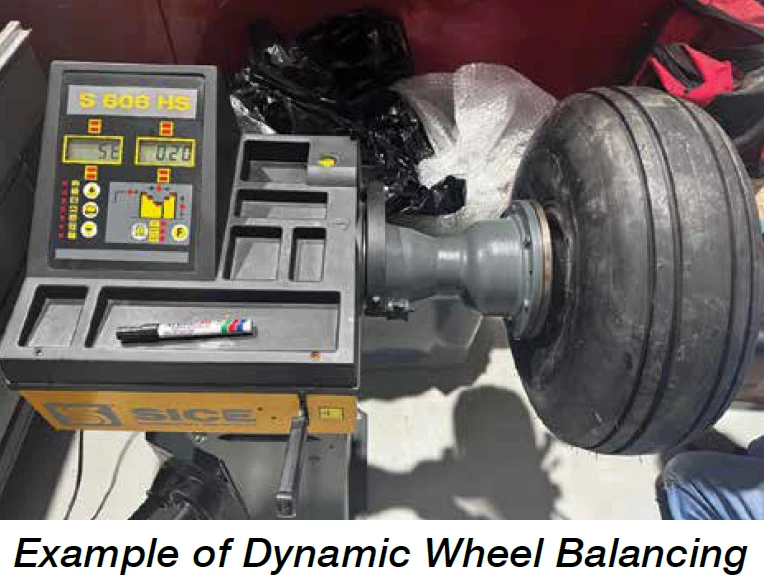For obvious reasons, aircraft are built light and generally only incorporate a safety factor of an extra one-third above the maximum required design load — unlike a truck that has a safety factor of approximately ten times the maximum required design load. Operating an aircraft with a light load, off of smooth surfaces, using long runways, and flying in conditions with little or no turbulence all plays a notable part in reducing airframe fatigue, wear and tear, including the development of cracks in airframe components.
There are two other practices that can have a very significant impact on reducing aircraft and component fatigue, as well as pilot and passenger comfort. Unfortunately, these — from my observation — are more often neglected than pursued.
The first is landing gear wheel balance. An out-of-balance nose wheel can induce shimmy that may, at its worst, result in complete nose gear failure and accelerated wear on components such as torque knee bolts and bushings, steering collars, airframe attach points, and hardware. Similarly, an unbalanced main wheel can cause notable wear and cracking in the landing gear and its airframe attach points. In Cessna single-engine retractable aircraft, this may lead to premature fatigue and wear of MLG saddle pads and pivots.
In the early days of my career, I lowered the tail of a Cessna 206 and spun up the nose wheel to approximate take-off speed using a very early dynamic wheel balancer — a flat aluminium wheel attached to an electric motor. The imbalance was so extreme that the nose wheel fork and wheel were visibly moving approximately three inches fore and aft. I quickly shut the system down and cleared the scene. The forces required to move that assembly so dramatically were, and still are, unimaginable.
We currently use two wheel-balancing methods. The first and simplest is a static balance kit supplied by McFarlane Aviation, available through Australian dealers. It’s quick, easy, and accurate — usually within five grams. The second method, which we prefer, is dynamic balancing using a SICE-manufactured automotive wheel balancer. This provides nearly perfect results with accuracy within two grams.
If you can feel wheel vibration during or just after your take-off roll, I strongly suggest addressing it. Cessna MLG saddle pad shells are very expensive — between $3,500 and $5,500 AUD each — and I believe imbalance causes the soft pad material to break down and delaminate prematurely.
Another area that pays huge dividends is propeller dynamic balancing. This is essential to extending the life of nearly every component in the aircraft, many of which are expensive. I’ve seen propeller imbalance lead to cracked engine crankcases, failed baffles, and cowling damage. It can also affect electrical components, including alternators, magnetos, lamps, and their terminals. Aircraft instruments are not immune and may suffer permanent damage. Vibration also accelerates wear on control cables and hinge points, and even impacts passenger comfort.
I’ve flown light aircraft that made my jaw vibrate — and others that seemed smooth due to newer engine mount rubbers or interior trim disguising the imbalance. Ultimately, the only way to know for sure is to carry out a proper balance and return the propeller/spinner setup to within negligible vibration limits.
Sitting behind a dynamically balanced light aircraft engine is a truly satisfying experience. It’s smooth, controlled, and undoubtedly one of the smartest and most worthwhile investments any aircraft owner can make.
Tony Brand
Chief Engineer, Horsham Aviation Services


